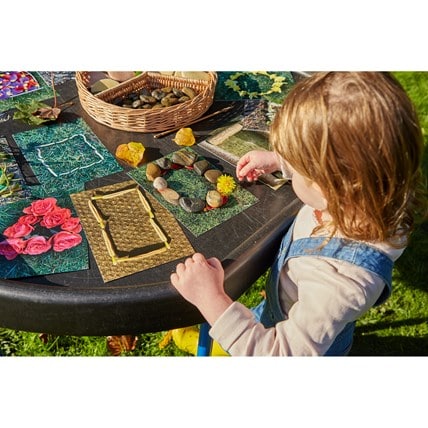Teaching maths outdoors: maths awareness month
Whether your pupils will be entering Year 6 in September or are just beginning to develop an awareness of numbers in EYFS maths, get them into the habit of performing some outdoor maths activities. It will also help you with teaching maths outdoors so that your class can keep up with their numbers, angles, and bar charts no matter where they are. It’s also the perfect opportunity for children to enjoy the outdoors and become more mindfully connected to nature.
Outdoor maths activities
Taking indoor lessons and activities outside can sometimes be a bit difficult, so, we have come up with some activities and maths resources for you to take maths outdoors.
Symmetry
- It’s a fun and easy topic to take outside with minimal preparation
- Symmetry hunt – Find objects with 1, 2, 3, or 4 lines of symmetry. You can then get them to record their findings on a sheet, take a photo of it, or simply just let them enjoy finding symmetry – not everything has to be evidenced and assessed!
- Symmetry bugs – Get your class to design and build their own symmetrical bugs using sticks, leaves and stones
Shape Hunt
This is a simple but fun activity for your little ones who are looking at shape recognition. Get them to go into your outdoor space and see which different shapes they can see in the area. This can be done verbally with a teacher, learning assistant, partner, or by recording it on a record sheet. Why not try our nature shape cards and pupils can use these to create different shapes.

Number Recognition
There are lots of ways to look at number recognition in the outdoors. Create task cards with simple instructions to collect a certain number of sticks, leaves, or stones. Making some cards that involve finding a simple number, others that involve finding a simple number and size/colour, and more challenging cards that involve finding two different numbers. You can make this as easy or as hard as you want to. You can also get them to collect sticks, leaves or stones and use the outdoor abacus to count them.
The Human Clock
Time can be a difficult subject to teach at the best of times. The human clock game makes this tricky topic active and fun for your students. Create a large clock using sticks, chalk, or anything else that works for you and read out different times, getting your students to make the time using their bodies as the clock arms while lying on the floor. This activity works well as a whole class; however, it can also be very effective when students are working in small groups.
Create a mud kitchen
With balances, scales, pots, pans, buckets, wooden spoons, ladles and a water source. You could create a laminated recipe or ‘spell’ cards and encourage children to write their own. Who attempts to follow the recipe? How many pebbles balance the bucket of mud? By using the wooden balance scales, pupils can learn about measurements and try to balance their outdoor ‘ingredients’. Perfect for teaching maths outdoors.
By integrating outdoor play, this opens new experiences to explore, be curious, share, laugh and learn. Whatever you decide to do, taking children out of their comfort zones is important as it helps them grow a few more inches personally, socially and emotionally. And if you’re looking for even more inspiration on outdoor maths activities check out our blog on fun outdoor maths activities.